
Sarajevo, Bosnia
April 18, 2015 8:04 pmHello!
Wow, Bosnia was an eye-opener for us. And we are still confused as hell. Perhaps you have a clear understanding of the recent history in Bosnia-Herzegovina, but here is what we now understand from this learning experience:
Sarajevo is the capital of Bosnia-Herzegovina (abbreviated BiH) with a population of 430,000 people, nestled in a colourful valley. Sarajevo is known for its traditional religious diversity; Islam, Orthodoxy, Catholicism and Judaism have coexisted here for centuries. Sarajevo is world famous for 3 major events in the 20th century, the start of WW1 in 1914, the Winter Olympics in 1984 and the Seige of Sarajevo 1992 – 1995. More on these events later.
When Bosnia and Herzegovina declared independence from Yugoslavia and achieved UN recognition, Bosnian Serbs declared a new Serbian national state Republika Srpska (RS) inside the territory of Bosnia and Herzegovina. The RS encircled Sarajevo with a siege force of 18,000 stationed in the surrounding hills, where they assaulted the city with every weapon known to man; sniper rifles terrorized. The Bosnian defence forces inside Sarajevo were poorly equipped and unable to break the siege. For nearly four years, from 1992 to 1995, the city suffered the longest siege of a city in the history of modern warfare (1,425 days long).
Over three-and-a-half years of war, 100,000 people were killed, and half of Bosnia’s population of 4.4 million fled their homes.
While the US and the EU put governing structures into place in 1995 to end the war by creating three separate federations (for Bosnians, Croats and Serbs), the Dayton Accord did not resolve the underlying issues. Bosnia is dysfunctional and may be more divided now than two decades ago. Just as one example of their current politics: The Chair of the Presidency of Bosnia and Herzegovina rotates amongst three members (a Bosniak, a Serb, and a Croat) every 8 months within their 4-year term – and that is just for one of the federations!! Very confusing and not very efficient.
International watchdogs say Bosnia has one of the highest government corruption rates in Europe and its economy is in rough shape. Unemployment is at 40+ percent, and a major source of revenue is remittances from Bosnians abroad.
Sunday, April 12 – Sarajevo, Bosnia!
We arrived in Sarajevo and settled into our apartment hotel. It is very nice and central so we could walk to most places. The hotel recommended a restaurant for dinner so we explored a bit first – Sarajevo is beautiful!
Serbian Orthodox Cathedral:
Nice little park with a huge chess set. People were crowded around each time we passed:
The restaurant was called ‘Morocco’ and we had it all to ourselves. There were several hookah pipes on display and we would later discover, also in most cafes in Sarajevo. (Hookah’s are sort of an ancient version of today’s Ecigarette.) Dinner was great and the restaurant interesting!
Monday, April 13
Latin bridge – The shots that changed the world! Today we were fortunate to step back into history as we crossed The Latin Bridge. This is the oldest in Sarajevo and dates from the Ottoman Empire. It was here on 28 Jun 1914 that Gavrilo Princip (a Bosnian Serb) shot and killed Franz Ferdinand (heir to the Austro- Hungarian throne) and his wife Sophia. The assassination was to break away from Austrian rule and create a Slav state. This event triggered the start of WW1.
A little known fact was that Gavrilo was just 18 years old, he was one of 6 assassins (that included all 3 Ethnic groups) that day …the first 2 failed to act as the motorcade passed by, the 3rd one threw a bomb which missed and exploded in the crowd; injuring a few. This 3rd guy swallowed a cyanide pill and jumped in the river to die. Unfortunately he puked up the pill and the river was only 4″ deep, so he was easily caught. It was after this that Gavrilo did the deed.
Gavrilo died in prison.
Interestingly, the bridge has been renamed 3 times. In the communist era Gavrilo became a Hero and museum next to bridge bore a plaque honouring him. This was removed by Nazi’s in WW2. After the 90’s Bosnian war it was changed again to reflect current public opinion. There is now a memorial plaque, but more factual and less about hero or assassin.
City sites….
Sebilj Fountain in ‘Pigeon Square’:
Mosque Courtyard:
The Stari Grad is a cool market area and has lots of cafes and narrow, cobbled-stone streets with wooden fronted stores and red tile roofs.
Sunset – we had sunshine!
Got my haircut today by making hand gestures and flashing a ‘before’ picture on my iPhone. Works every time.
Something interesting was going on in our hotel with a what sounded like an American politician and entourage. He and his body guard rode in the elevator with us which was a little awkward.
Tuesday, April 14
Took a walk through town and then up into a residential neighbourhood. The view was incredible up there. Love the red roof tops:
Then we found our way back down into town and promptly headed up another hill to the Yellow Fortress.
Here is one of so many cemeteries in Sarajevo, lined with fresh white headstones marking the graves of those killed during war. Out of necessity during the war, the desperate citizens cut the park trees down to use for firewood. The barren grounds were later replanted or filled with headstones.
Library:
Had dinner at a poor imitation Cheers bar.
Wednesday, April 15
Today we went on a tour to the city of Mostar; about 2 hours south of Sarajevo. We had a great tour guide, Edin, that was SO very passionate about his country. He told stories filled with emotion; pretty tough history to have to relive everyday as a guide. On the lighter side, the landscape was incredible!
Made a quick stop at Konjic stone bridge, built in 1682:

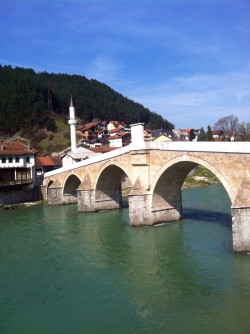
The city of Mostar was much bigger than we imagined and is a popular tourist location..
The roads to the Old Bridge were colourful and filled with markets, shops and cafes:
The Old Bridge, built by the Ottomans in the 16th century, is one of the Bosnia’s most recognizable landmarks and the Balkans’ most celebrated bridge. The Old Bridge stood for 427 years, until it was destroyed in 1993 by Croat forces during the siege of Mostar. It has since been reconstructed and the replacement bridge opened in 2004. As part of the tour we watched an 8 minute video showing the actual bombing and destruction of the bridge (heartbreaking!) as well as the celebration of the reopening.
Next we visited the scenic area of the Buna River in Blagaj. Gorgeous!
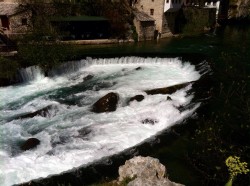

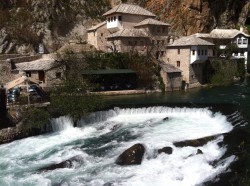
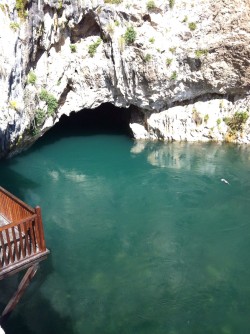
Blagaj is also home to this 16th century tekke.
What a fantastic place to have lunch overlooking the waterfalls:
Edin asked if we liked wine (well, duh!) so made an impromptu stop at a construction site for a unique wine tasting. A gentleman joined us with 2 plastic glasses in hand at an out of the way shop on the huge property. He brought 5 litre jugs of each red and white wine, and gave us a healthy pour. The wine was very good and this is a new growing side business for this company. And at 5€ a bottle compared to 15€ in stores, we supported the local economy. We were offered the jugs for 25€ each!
Vines:
Edin our guide pointed out some ‘miners’ on the way home to which we asked, coal miners? Nope, these brave souls remove active landmines. There are still many minefields and unexploded mines in the Sarajevo area and surrounding suburbs. While most, but not all minefields have been identified, removal is a very expensive task and there is a huge lack of resources as well as International aid.
View from the back seat window:
Thursday, April 16
City sites in Sarajevo!
Beautiful big old mansions that were converted to an Embassy, museum, etc.
University and modern bridge:
In Sarajevo, there are still so many reminders of the 1990s conflict. You just have to look around at the buildings to see the scars of war with gaping bullet holes or no roofs or windows.
In 1984 Sarajevo became the first Eastern bloc country to host the Winter Olympics and only the second, then Communist state. There are still a number of sights around the city displaying the emblems from the games, the stylised snowflake and the Olympic Rings.
It was a crowning moment for Sarajevo and the games were a success. Most of the venues have since been destroyed or abandoned; money would not be well spent on maintenance. Olympic Hockey arena:
We took a taxi high up in the hills to a restaurant called ‘Kibe’ for dinner. Very nice restaurant with authentic Bosnian dishes. The place is huge with multiple levels all with incredible views of Sarajevo.
The city really sparkles at night!
Friday, April 17 – Happy 88th Birthday Dad!!
Joe was determined we make our way to up a fortress in the hills.
It was not an easy find, but we did make it and we basked in a view of the city and the valley on the other side. Wow!
The Fortress:
For my Sista Bonnie:
This ‘Mother and Child’ Wartime memorial for the children of Sarajevo was erected in 2009 at the end of Communism. The sculptures represent a mother trying to protect her child. The names of the 1,300 children that lost their lives from 1992 to 1995, are displayed nearby.
The city has many “Sarajevo Roses” on the pavement. These red blotches of concrete filled in former shell holes.
We had a light dinner at a restaurant down the street and the best part was the music. They were playing a DVD of American ’90’s bands and we loved it! The food was good too but we had fun trying to remember who the bands were.
Saturday, April 18
This was a rainy day and we basically took it easy after a quick scan of 5 floors of a mall. Even travellers need a day off. Joe read and I finalized this.
We really tried to keep this post from being depressing, dark and sad, because our week here was anything but. Don’t get us wrong, we learned so much during our stay by just exploring and then researching the very sad history of this country. I myself felt so ignorant about the horrors of what happened here, and we only touched on it in this blog. Maybe most of you remember this recent history; my Dad for one was surprised we were even coming here and he was right, it isn’t over yet, but the healing has begun. We did spend time learning and digesting but we also looked at the bright side. There is great beauty in this city and country and within the strong people who reside here. The snow capped mountains are home to many ski resorts. The tourists are coming back.
I purposely took and shared very few pictures of the true devastation; we wanted you to see and for us to remember, Sarajevo as the people see it now. The city is lively and growing and has traces of ancient history remaining. The food is fantastic and inexpensive – and the people with their diversification are fascinating.
The only bad experiences we had here was; one, when walking through a quaint neighborhood, I smiled at a stray dog and he took to his feet barking at our heels; scaring the bejesus out of us and adding speed to our pace. And two, an old Muslim woman practically beating her granddaughter in broad daylight. My glare and our pause alone brought yelling from the woman and a vendor on the corner. Not sure if they were telling us to mind our own business but we knew we had to stay out of it. You had to be there…
In the last few days, we heard from two different sources about the heroic actions of Canadian soldiers as the first peacekeepers to arrive in Croatia in 1992. Made us proud Canadians.
Hope you enjoyed our tour of Sarajevo. Tomorrow we fly into Montenegro for a four city visit via buses. That will take us into Croatia early May where we will probably stay until mid-June. The highlight will be time with our kids of course!
Keep enjoying your spring and Go Canucks Go!
Love from,
Paula and Joe
xoxo

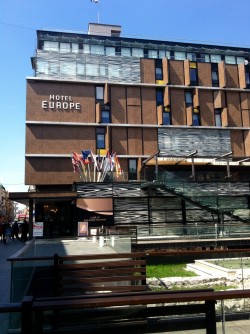

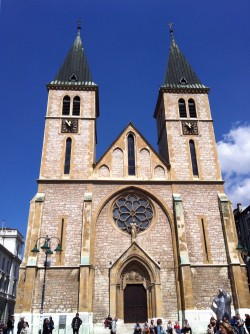






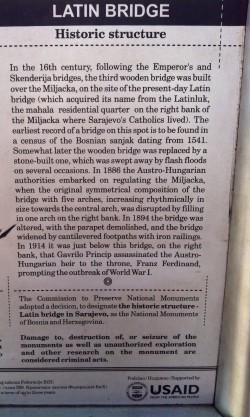


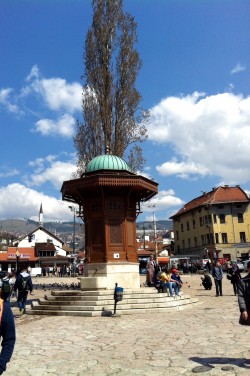
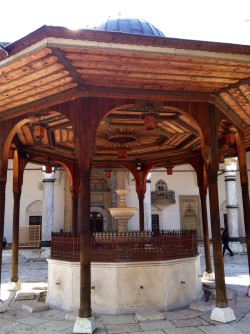

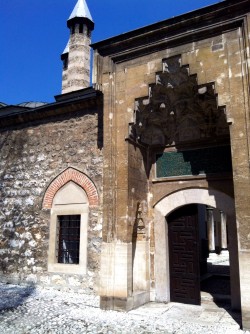
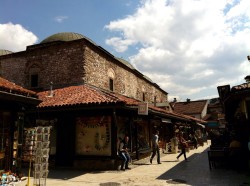
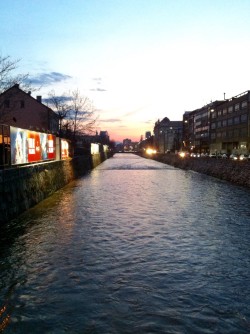
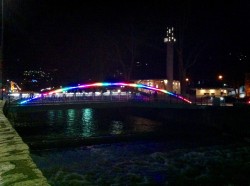
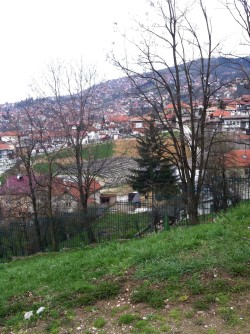
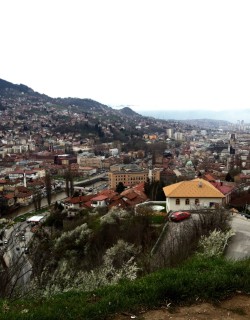

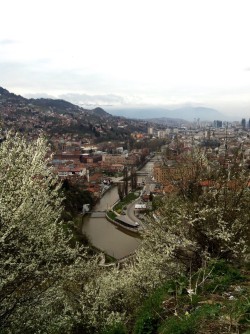

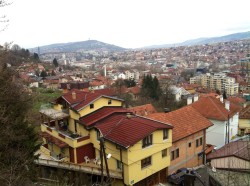

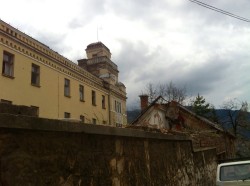
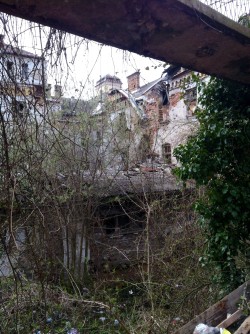
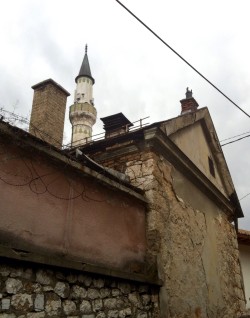
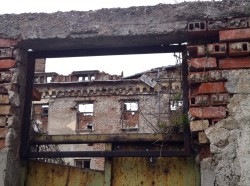
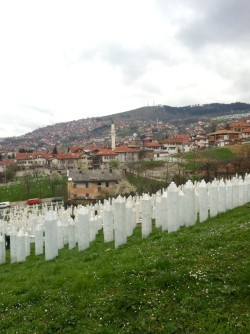
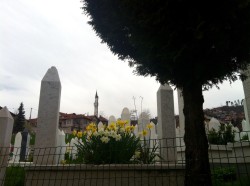

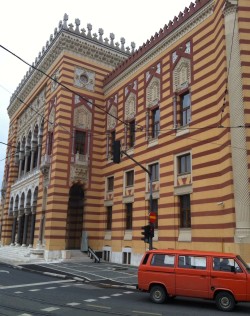
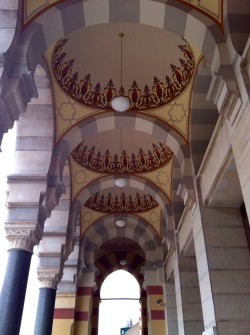
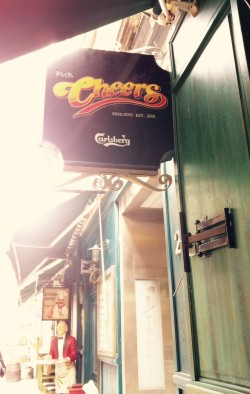
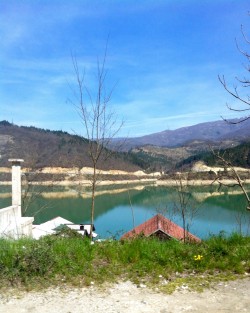
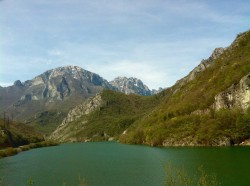
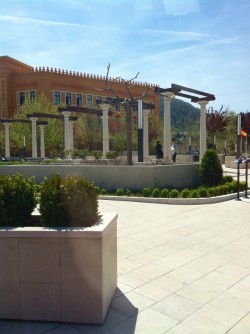
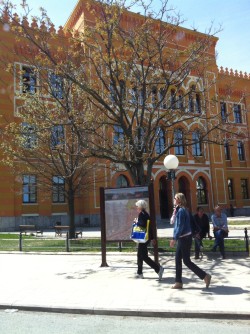

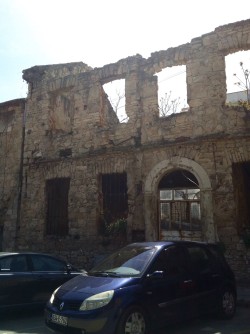
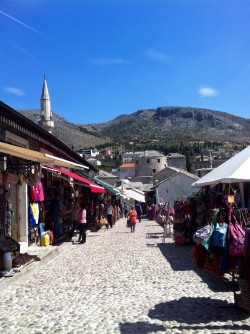



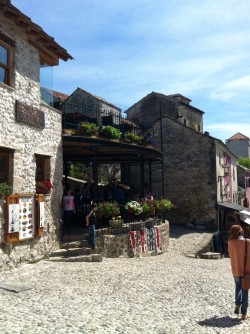
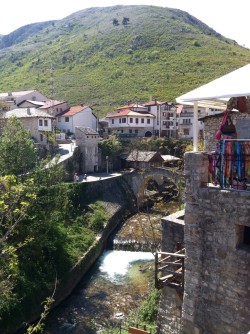


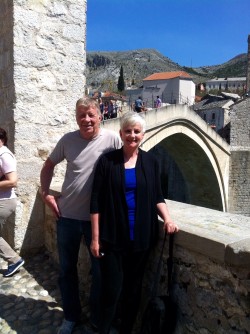
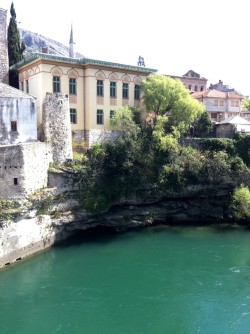

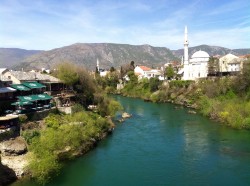

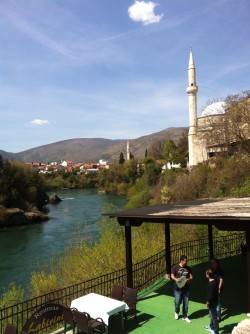

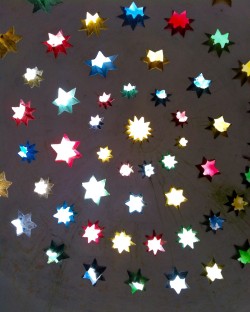
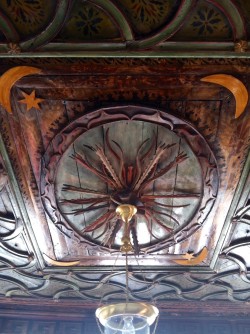
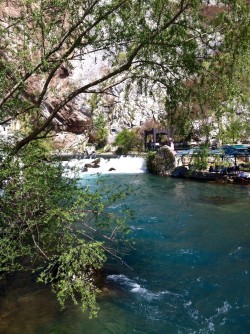
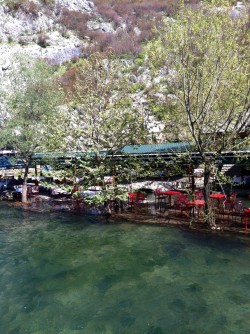
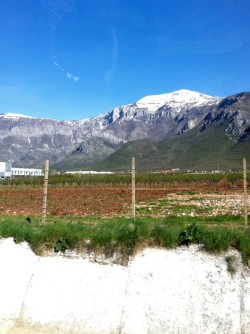

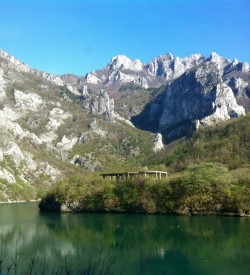

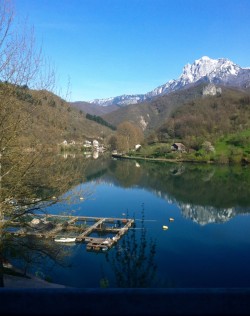
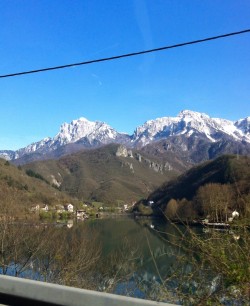
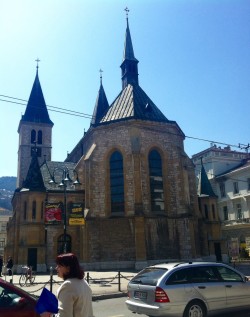
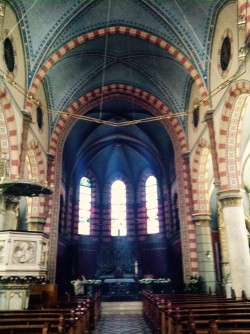
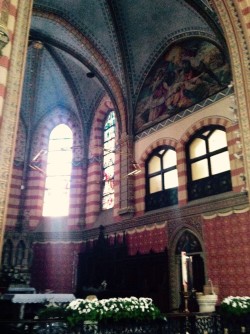
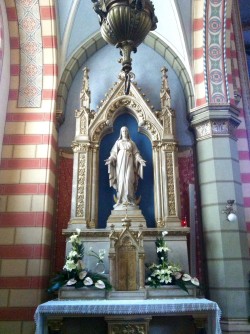

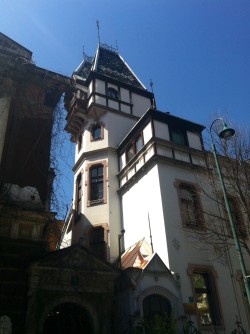

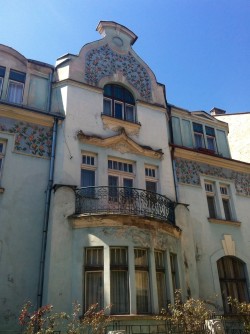



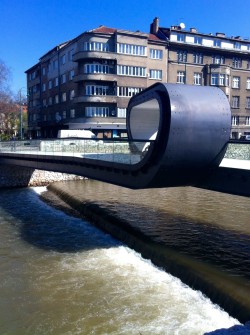

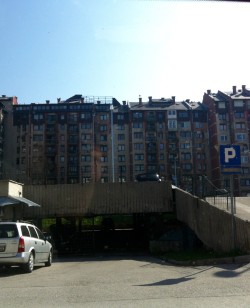
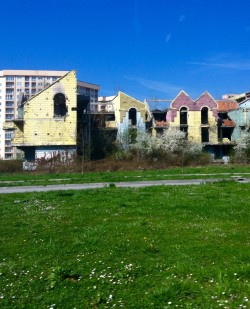
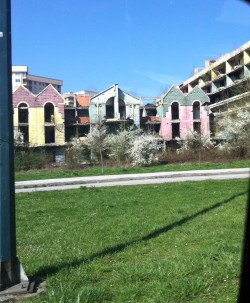


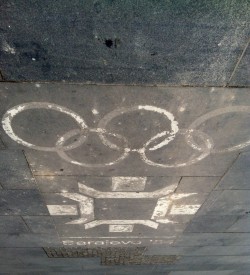
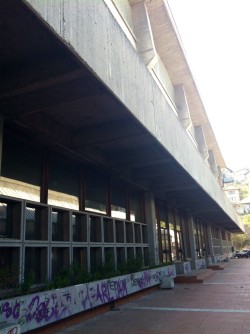


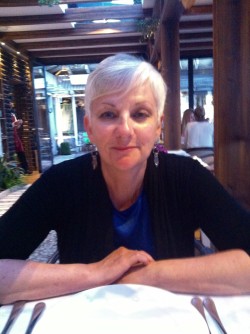


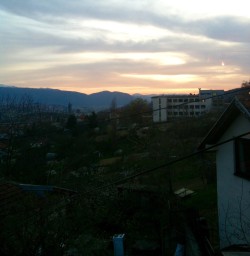

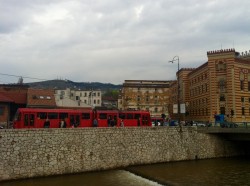
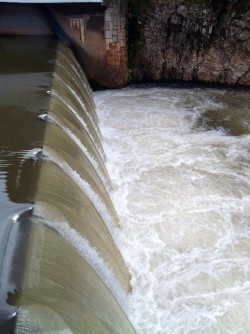

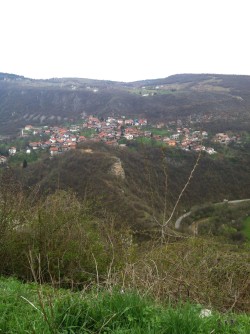
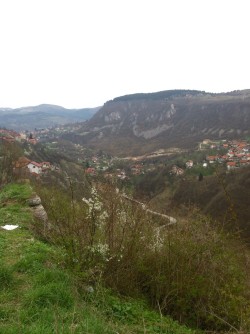

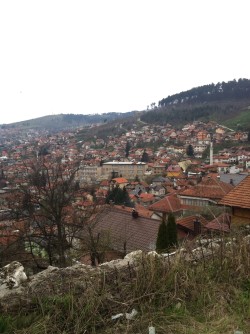

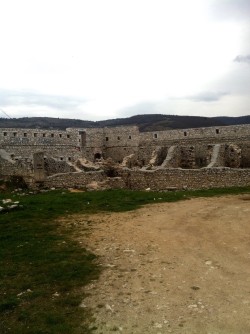
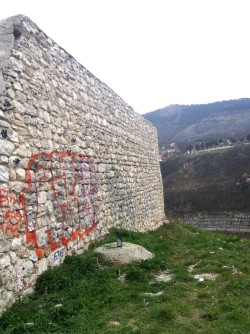
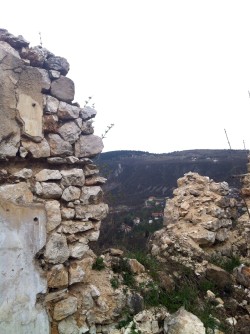
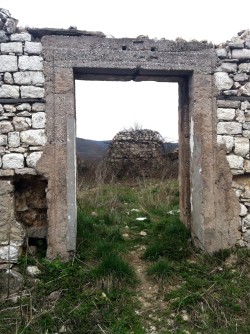
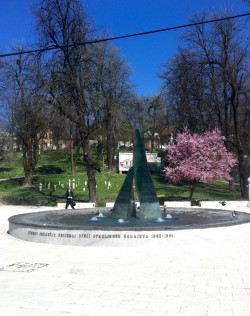
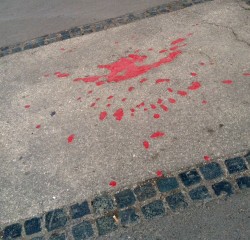

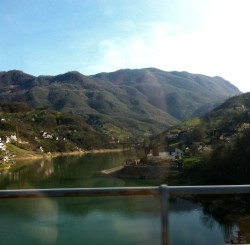
10 Comments
Fascinating as usual. Learning so much.
It has been fascinating for us too Jan! Thanks for following!
Paula and Joe
xoxo
We are watching the Canucks and I am enjoying your adventure. Not looking good at this point for the Canucks
The Canucks will make a comeback guys! How is your new home? Thanks for following along,
Paula and Joe
Very informative as always. The history lesson was great, even though it is a bit sad. Loved the photos, especially the ones of Buna River (was that also the cover photo)? The rocks and water are beautiful
Yes, lots of sad history here Jordan but we were very glad we got to experience Sarajevo. Bosnia is really beautiful! See you very soon!
Love from Mom & Dad
xoxox
Jusr catching up on your blog and loving every minute. I think you guys would make good tour directors. Love the new haircut. Keep up the photos and info, better than a good book, well almost.
Hi Sista! Tour Directors, eh? I would like to do something that would keep us traveling but not sure that is it. Next few ‘chapters’ will be sunny beach pictures! Thanks for following along…
Love from Paula & Joe
xoxox
wow! How did I miss this one ? Again an awesome tour and history lesson. amazing photos. Thanks for my special pic. June 6 , 2015
Thanks Sista! Always try for your special picture!